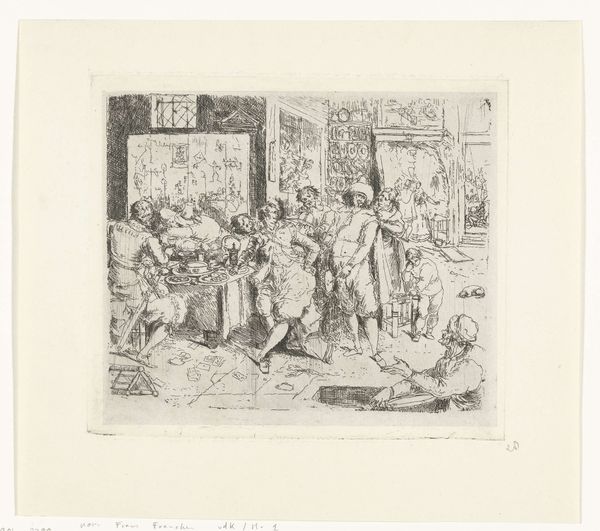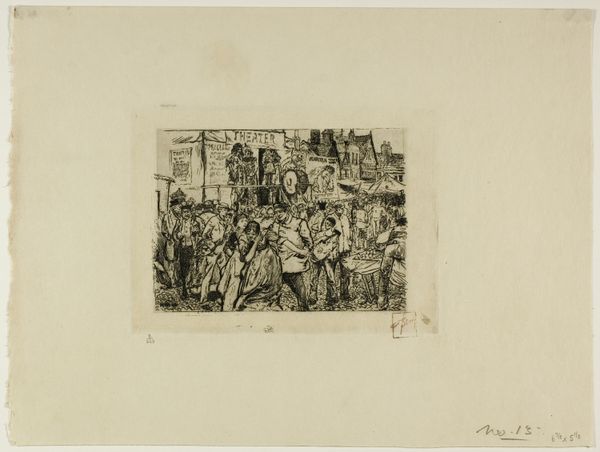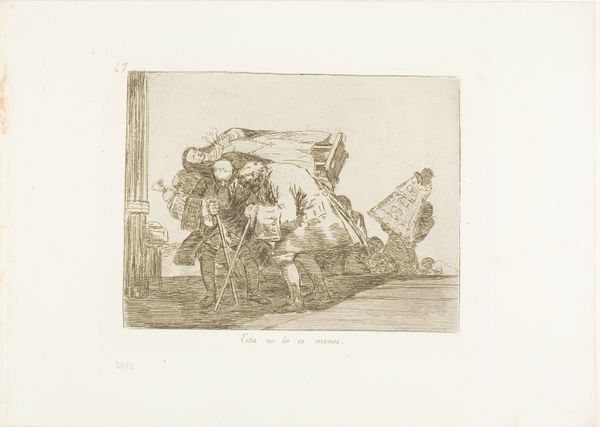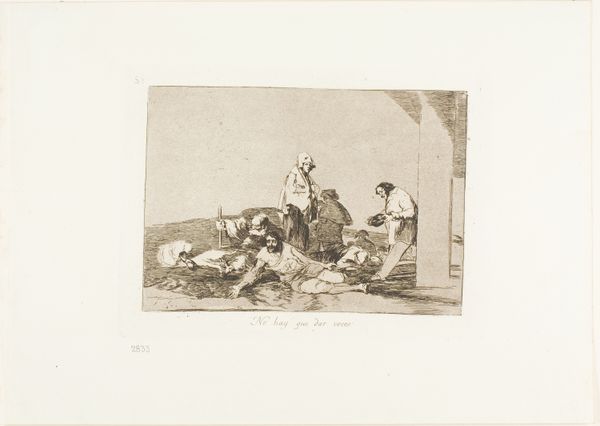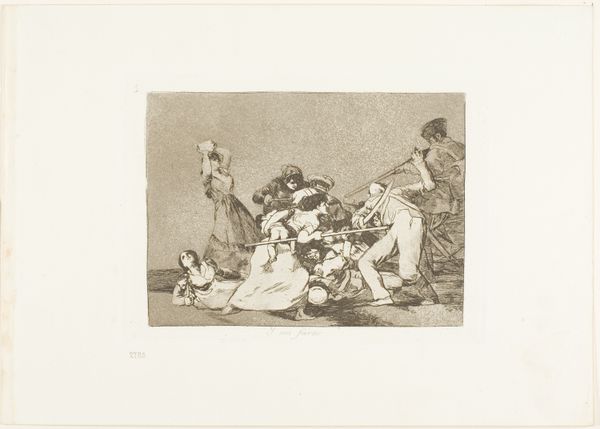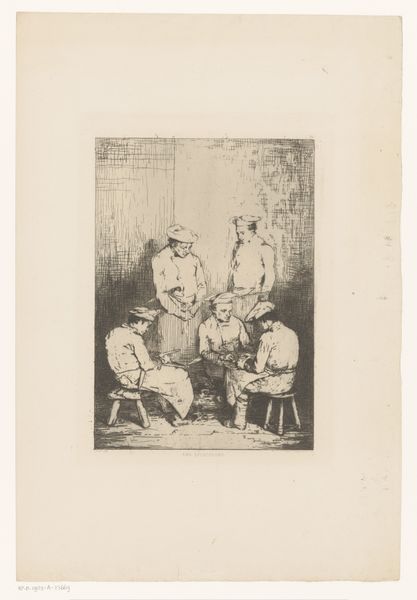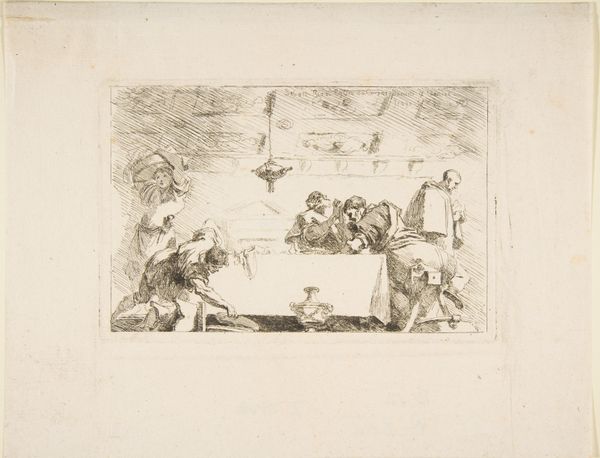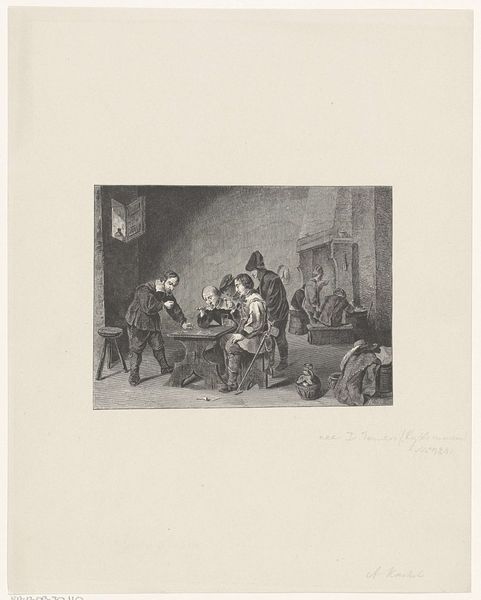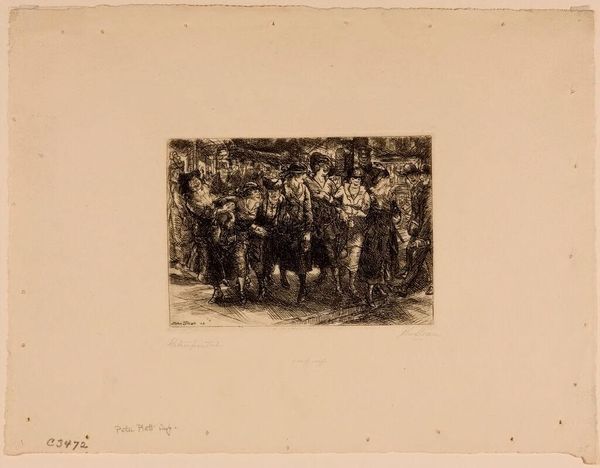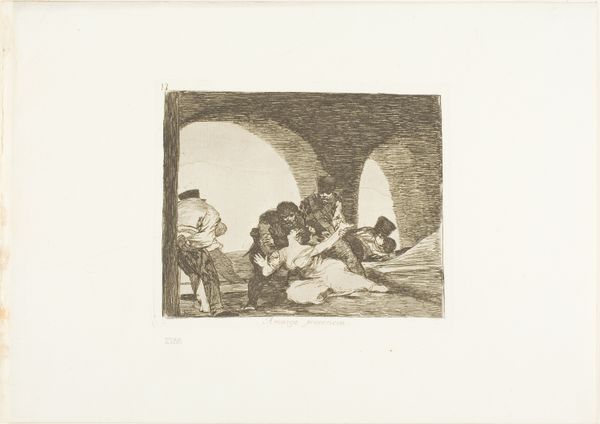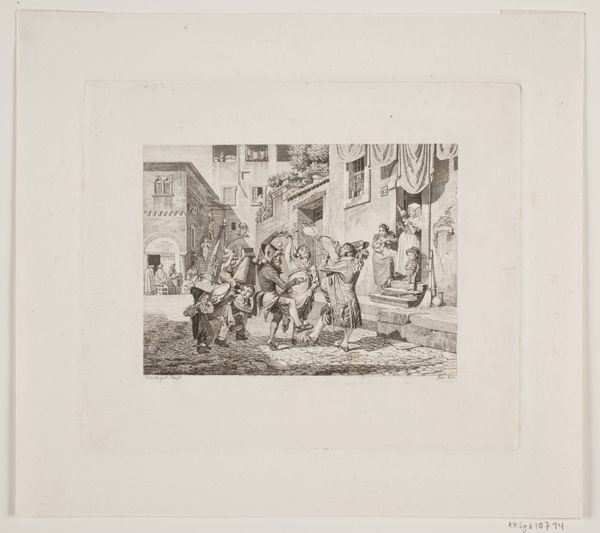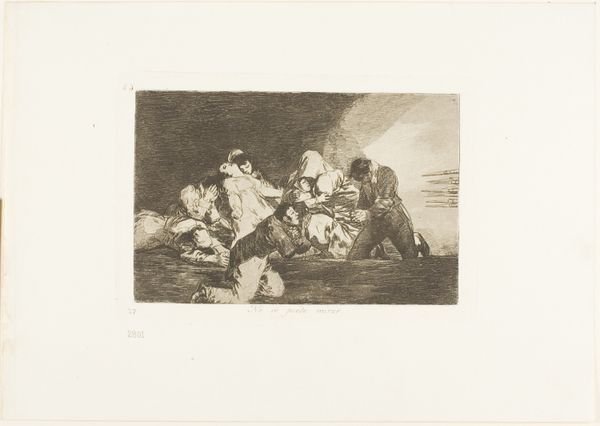
One Can't Tell Why, plate 35 from The Disasters of War Possibly 1812 - 1863
0:00
0:00
drawing, print, etching, paper
#
drawing
#
narrative-art
# print
#
etching
#
war
#
figuration
#
paper
#
romanticism
Dimensions: 129 × 180 mm (image); 154 × 209 mm (plate); 240 × 340 mm (sheet)
Copyright: Public Domain
Editor: This is "One Can't Tell Why," plate 35 from The Disasters of War, by Francisco de Goya. It's an etching, probably made sometime between 1812 and 1863. It depicts a group of figures, maybe prisoners, in what looks like a terrible situation. It feels heavy with despair, and the details seem purposefully obscured. What's your take on this, from a curatorial point of view? Curator: From a materialist perspective, this print speaks volumes about the commodification of suffering through the very process of its creation and consumption. The etching process itself – the biting of the metal plate with acid, the labor of inking and printing – transforms lived experience into a reproducible commodity. Consider how Goya used readily available materials – metal, acid, paper, ink – to critique the socio-political landscape of war. Does the apparent obscuring of details maybe, in your mind, amplify its impact or perhaps desensitize the viewer? Editor: I think obscuring details adds a layer of universality to it. The scene could represent any conflict, any group of sufferers. And the fact that it's reproducible means it can reach a wider audience, but I also see your point about the commodification of that suffering. So the very process amplifies the message? Curator: Exactly. The means of production becomes integral to the artwork’s meaning. Goya isn't just depicting war; he's using the materials and processes available to him to create a powerful and reproducible critique of it. The line blurs between high art and accessible craft. Where does Goya succeed in influencing change via art versus reifying its problematic impact by disseminating copies of torture? Editor: That’s given me a lot to think about. I’m walking away with a totally new appreciation of the materials used here! Curator: And, hopefully, a deeper understanding of how the "Disasters of War" reflect the artist's labor, our consumption and engagement of this artwork, and also that it provides historical social commentary through physical production and widespread printing practices of the time!
Comments
No comments
Be the first to comment and join the conversation on the ultimate creative platform.
